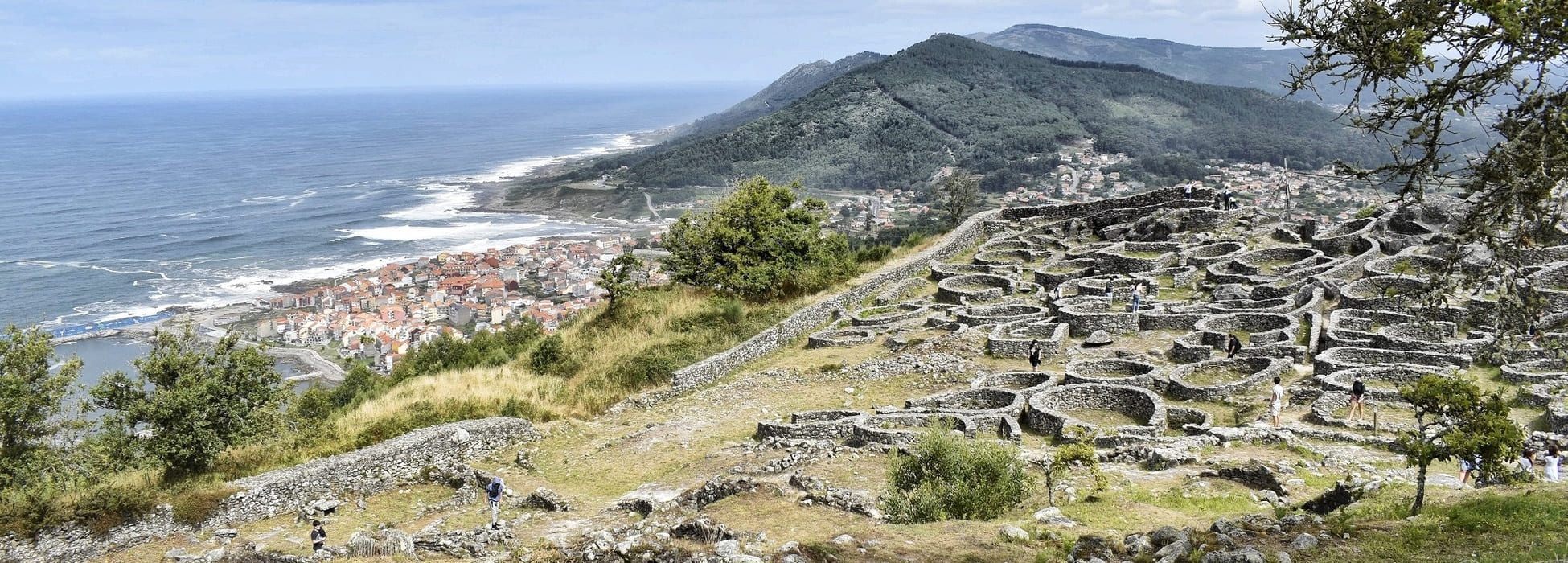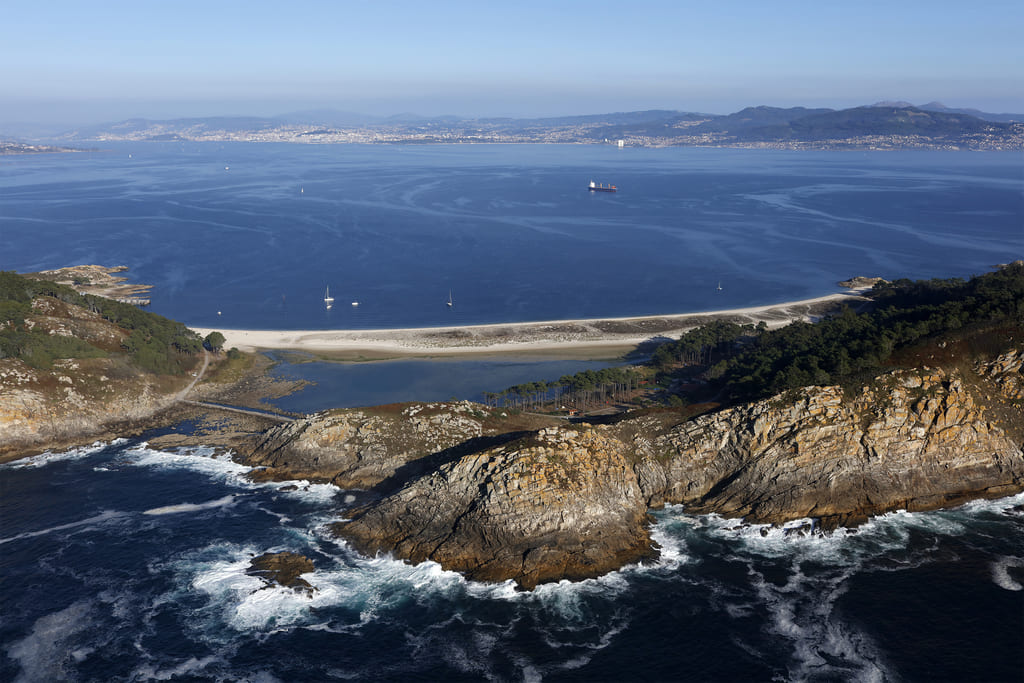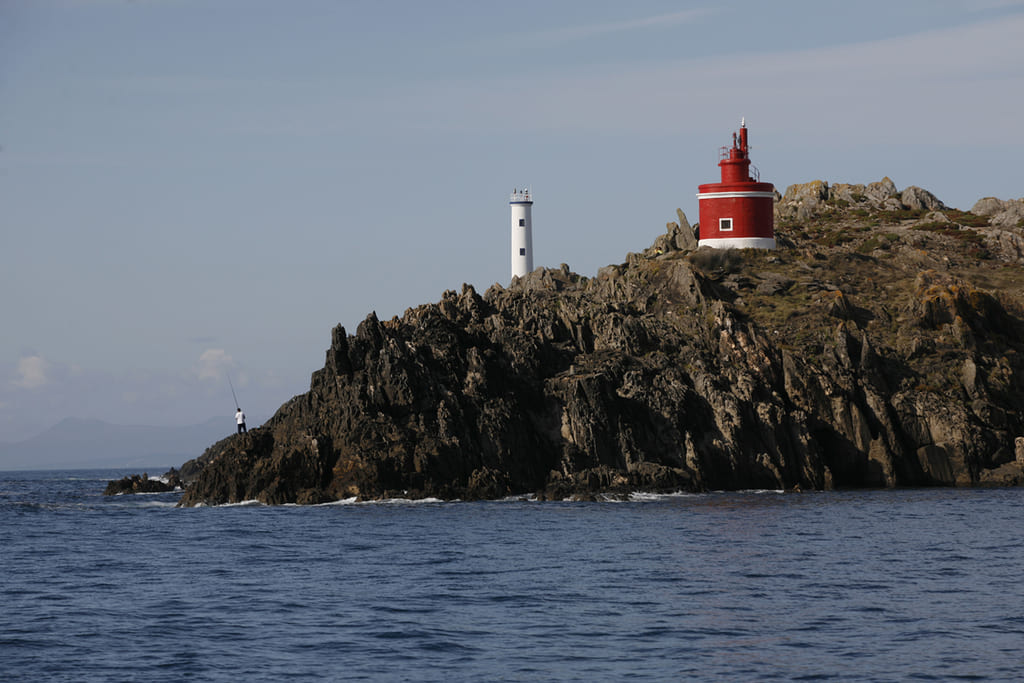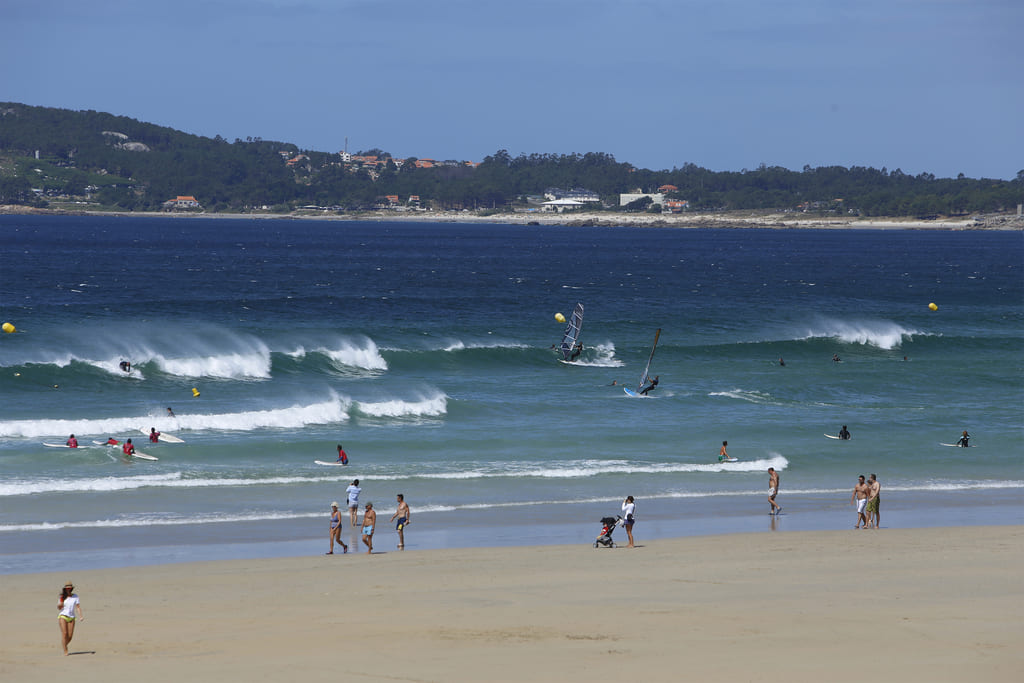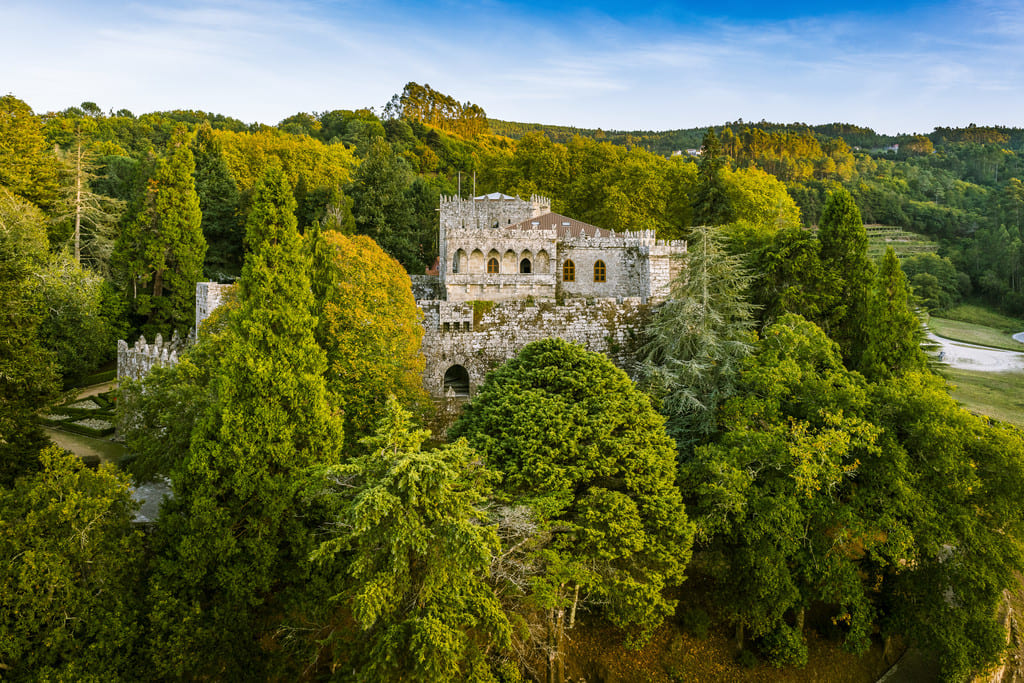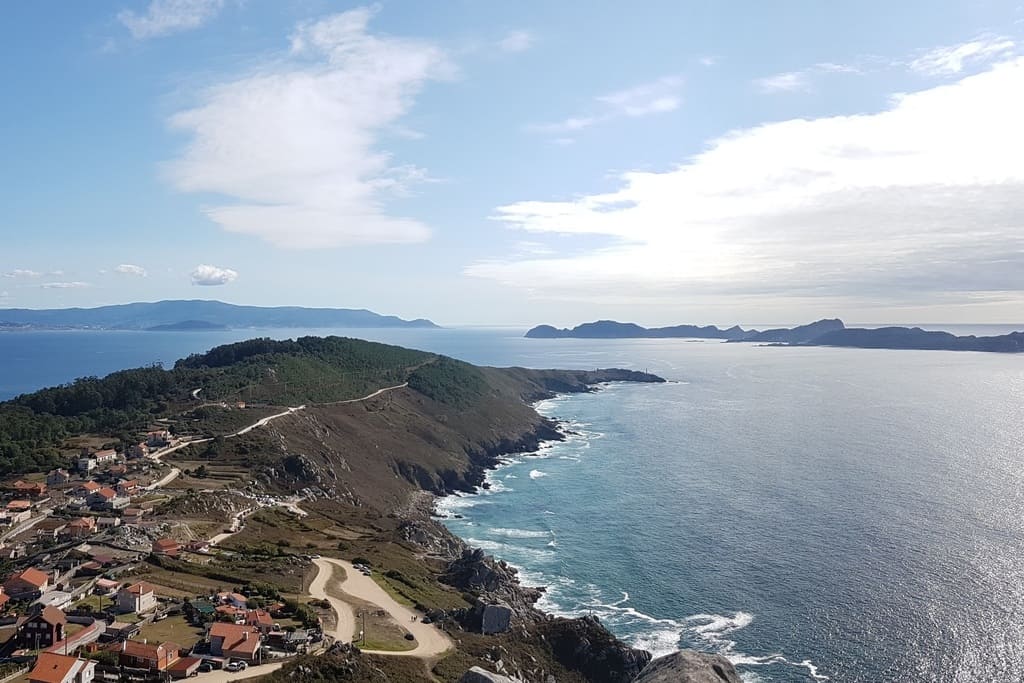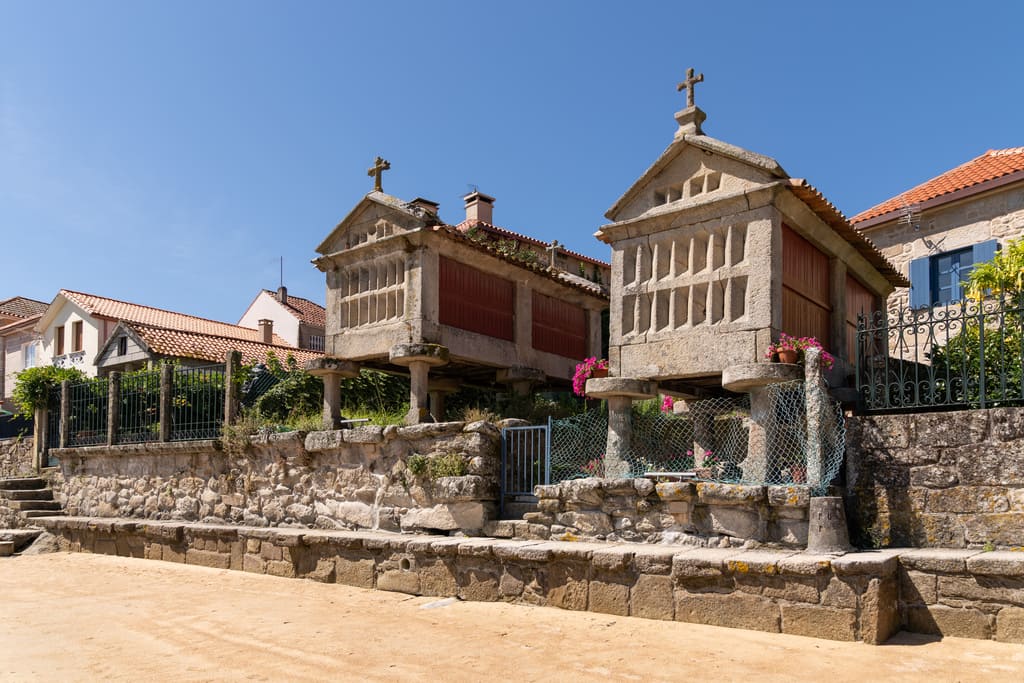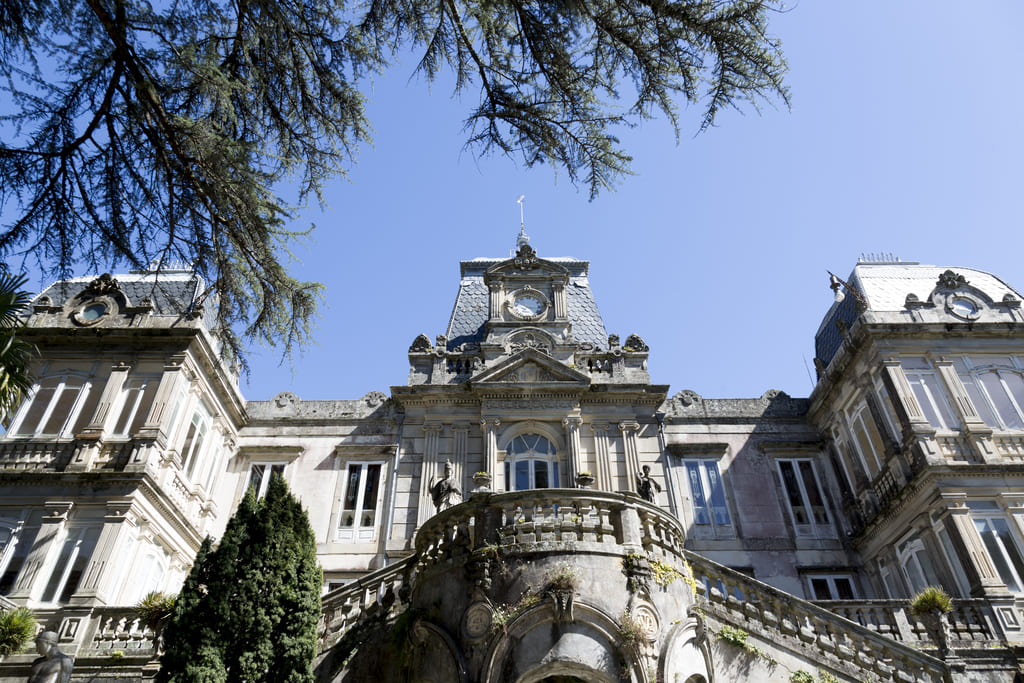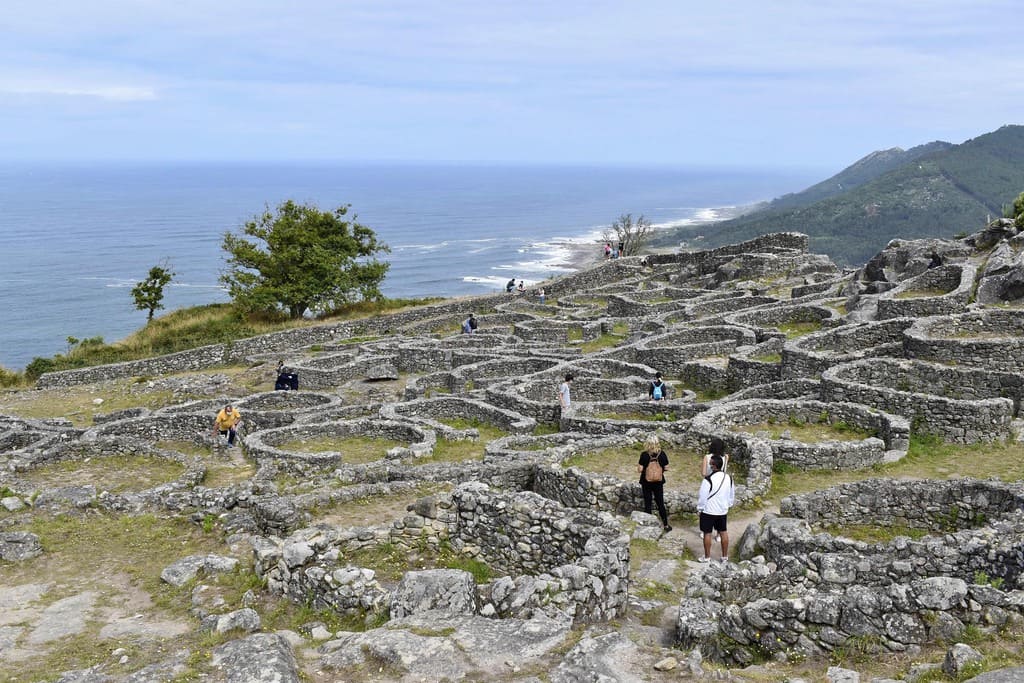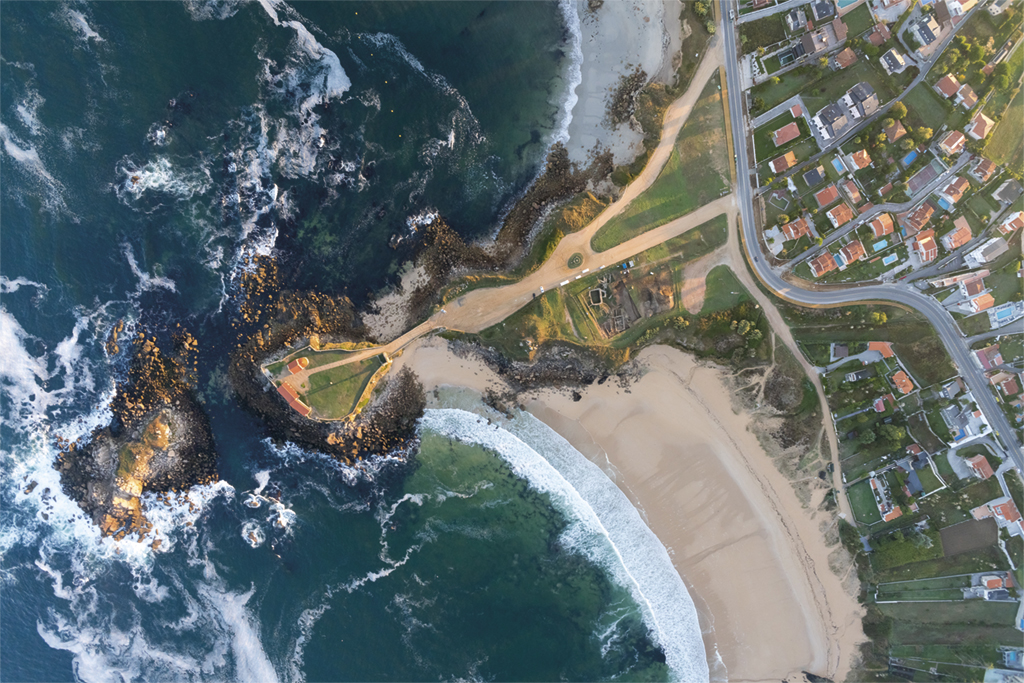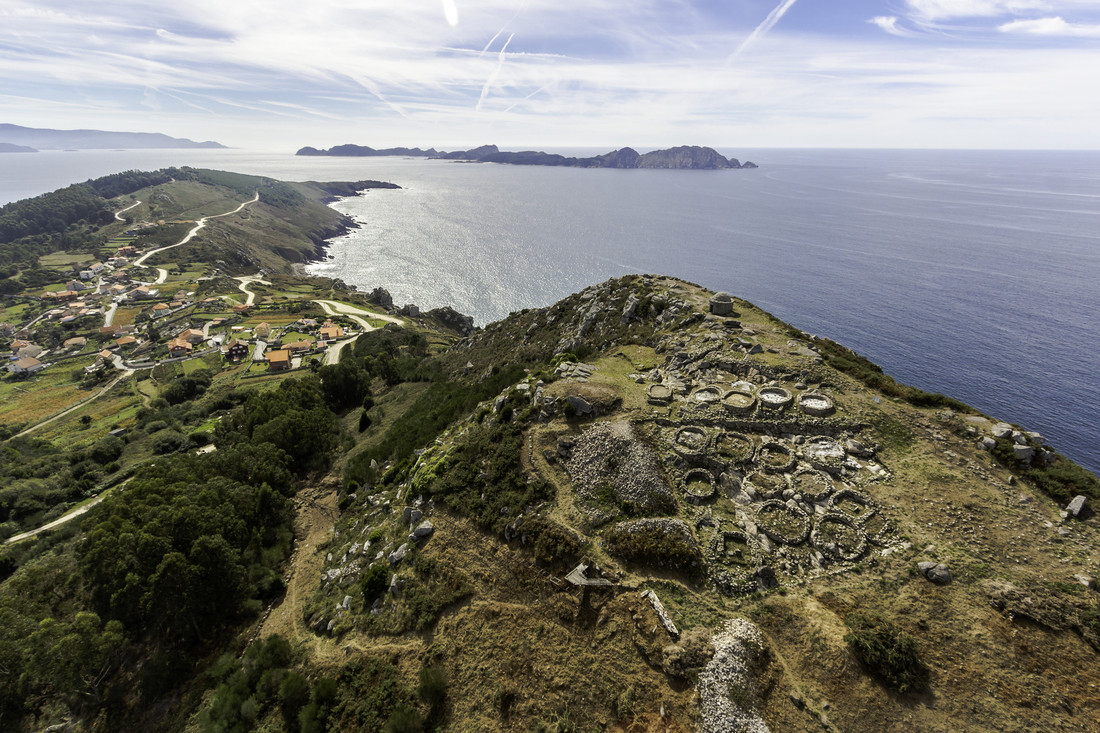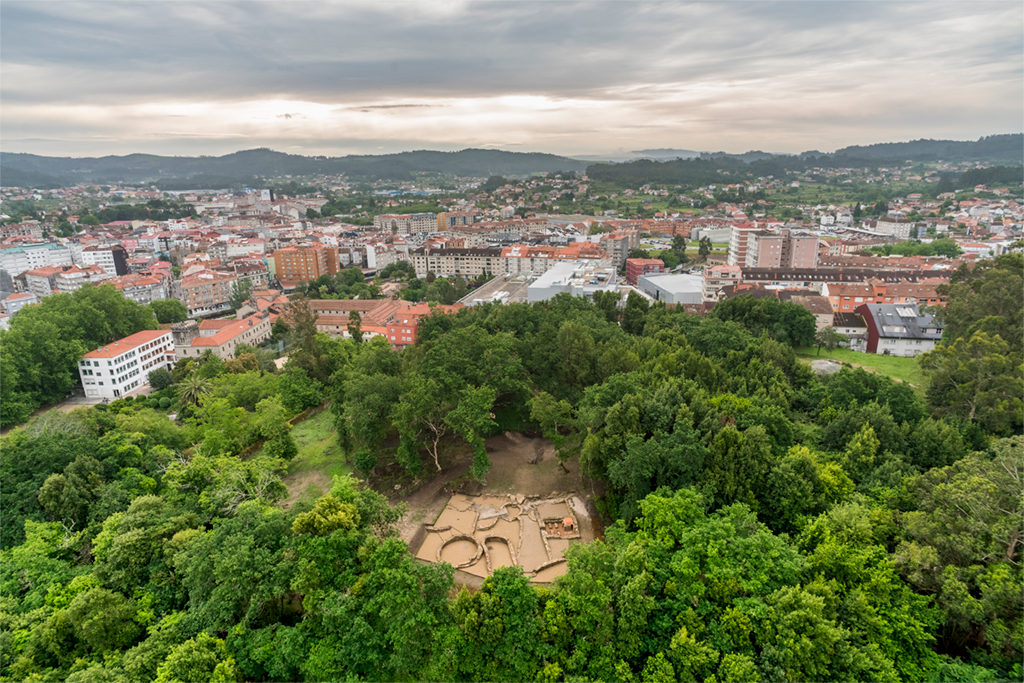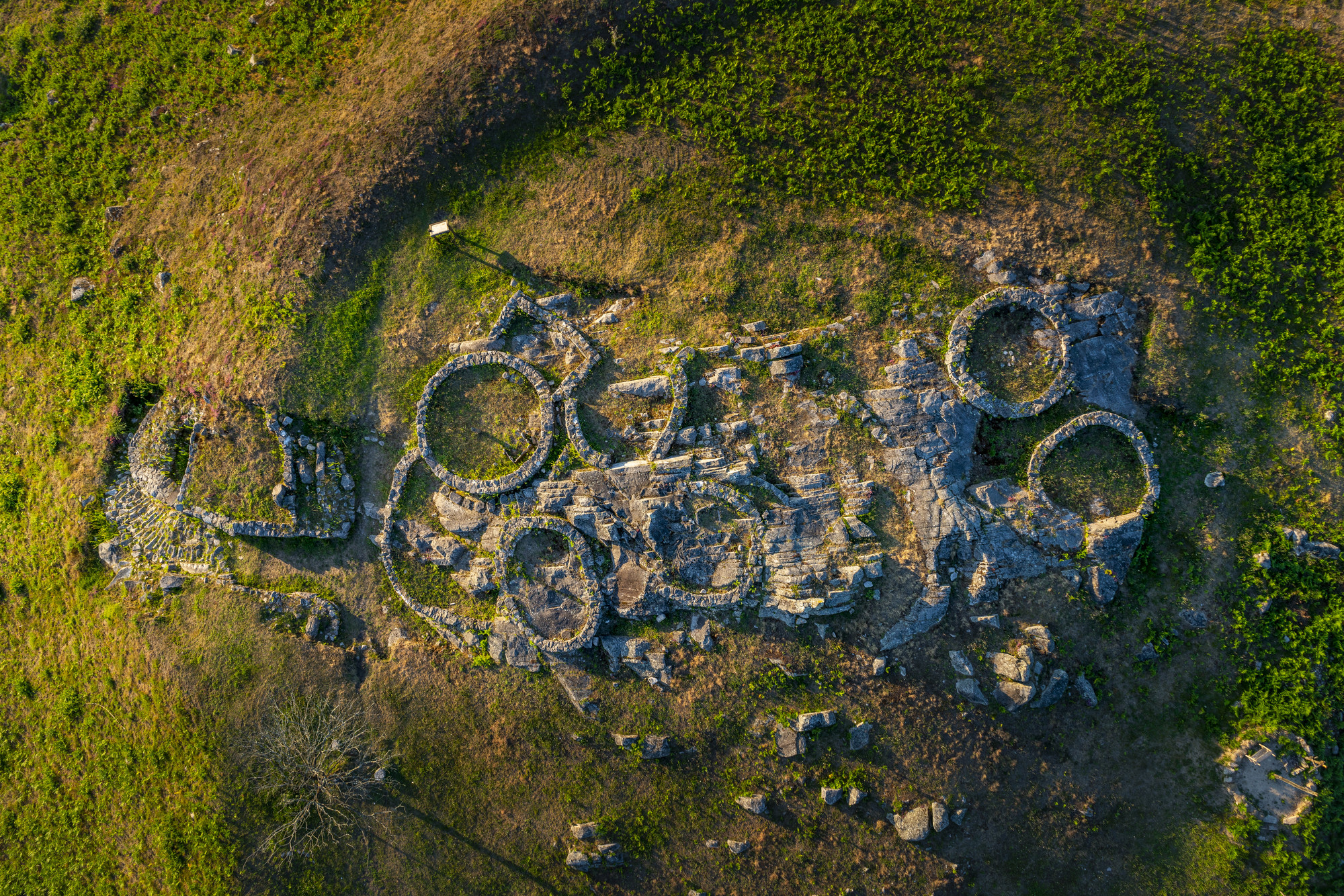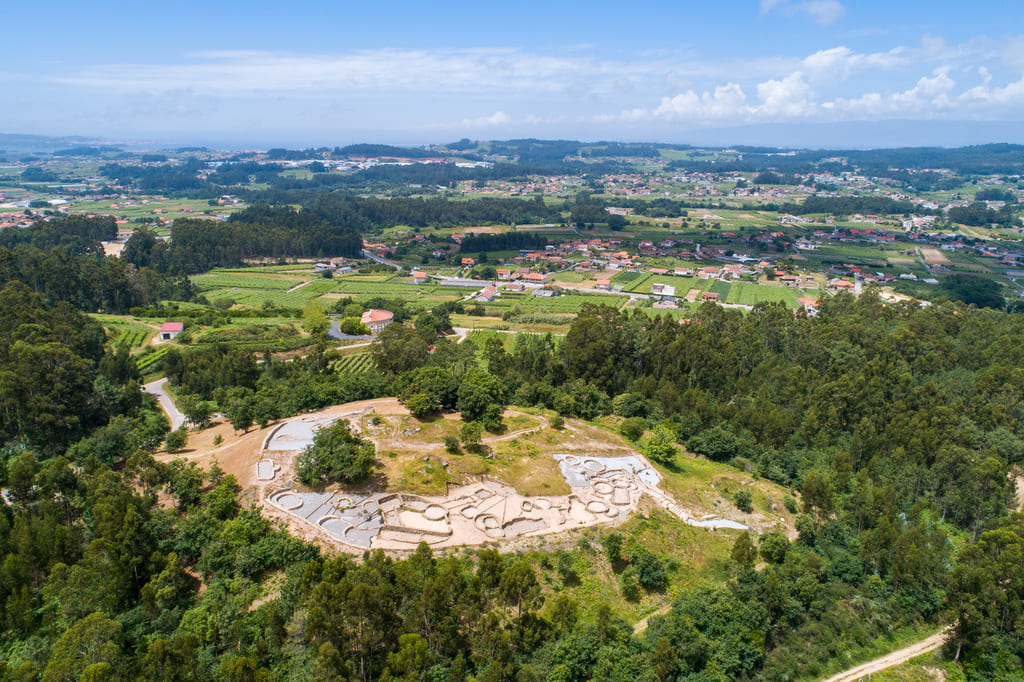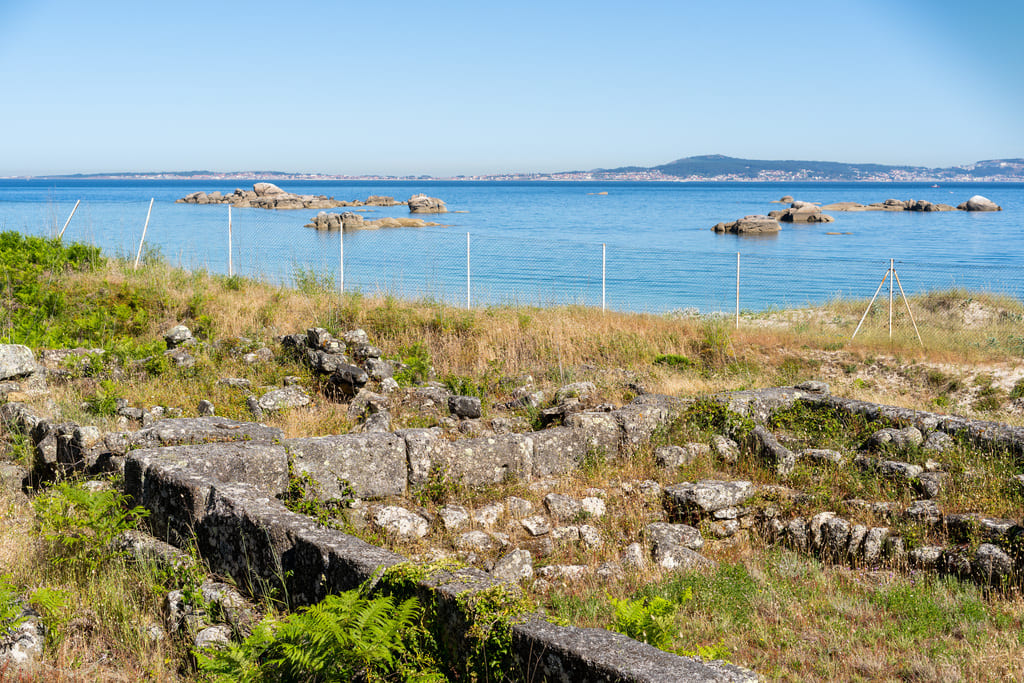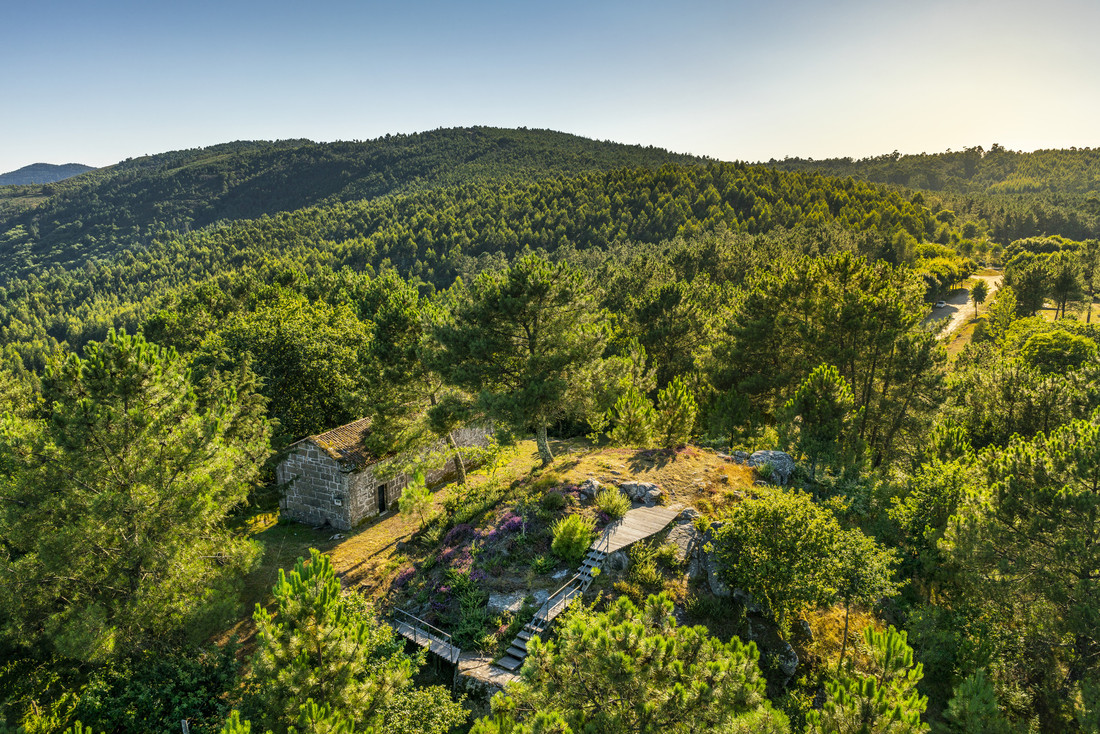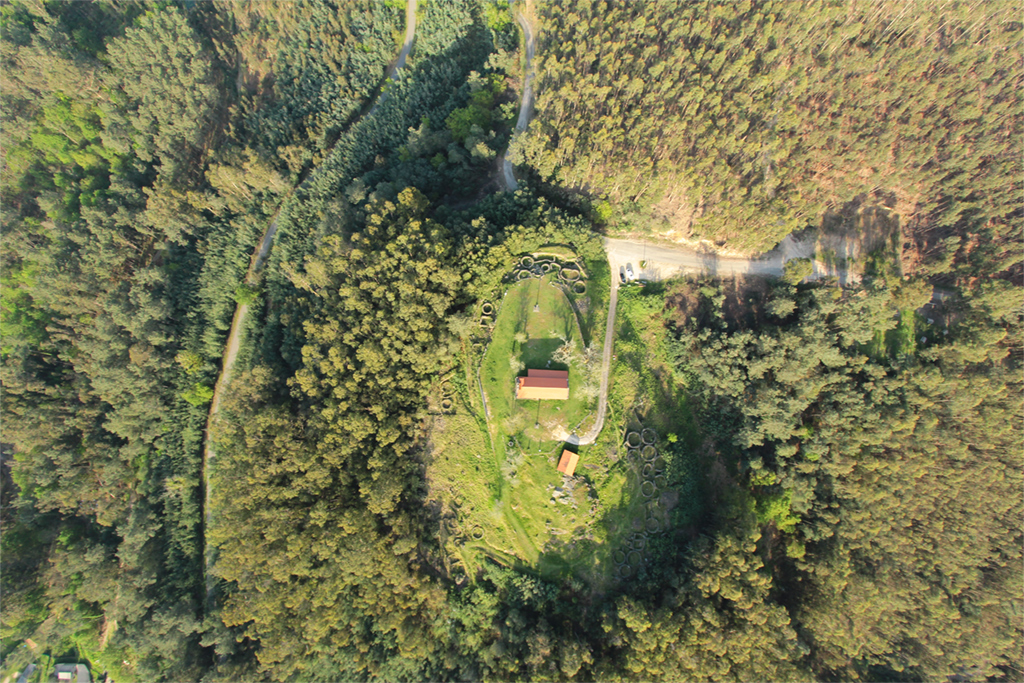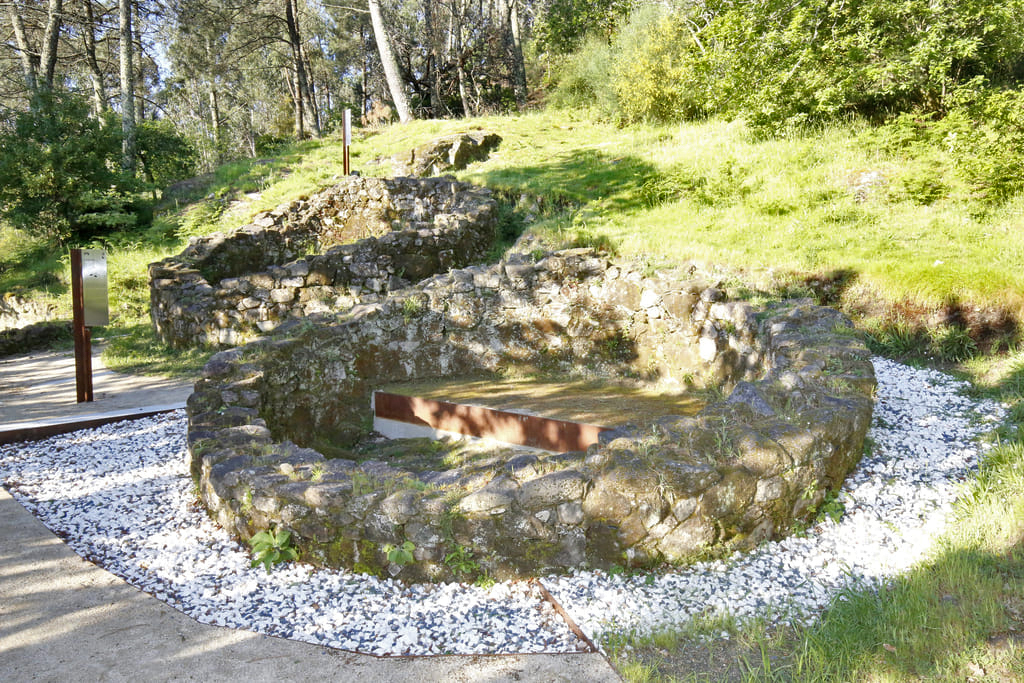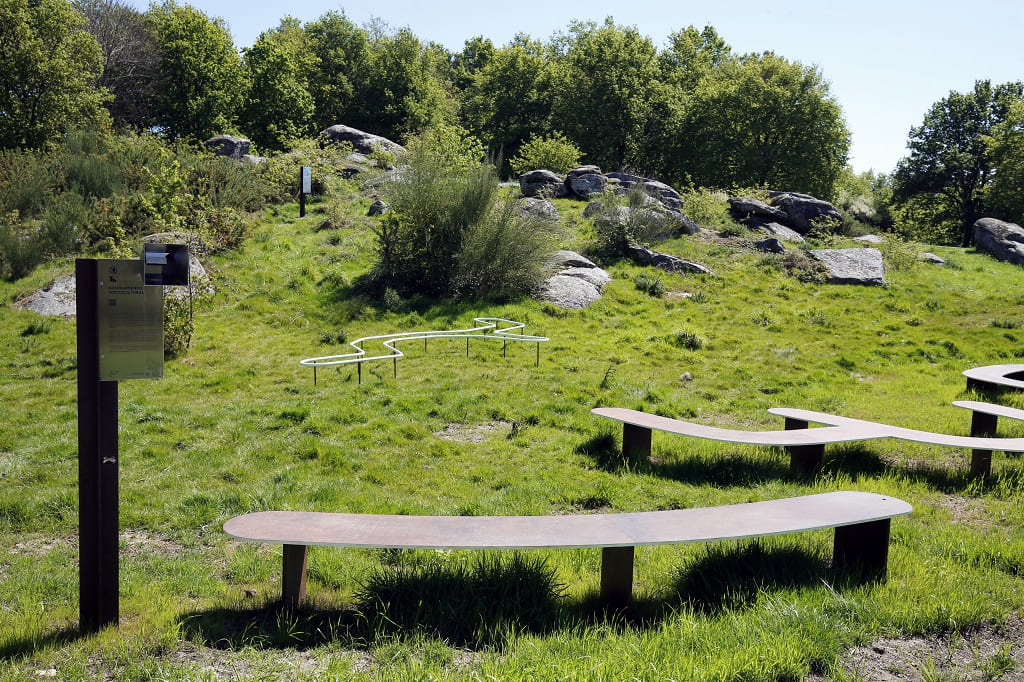The circular constructions of the pre-Roman hillfort settlements, popularly known as castros in As Rías Baixas, are surrounded by stunning landscapes. Santa Trega, O Facho, Castrolandín, A Lanzada... The Gallaeci have left their mark in strategic spots on both the coast and inland. A visit to these places will take you back to ancient times.
The stone has been part of the landscape for thousands of years as a faithful witness of the history of the province of Pontevedra. The castros, native pre-Roman hillfort settlements from the Iron Age, had been inhabited for centuries until the Roman occupation. Over time, they were forgotten and ended up hidden underground. At present, they emerge again after the thorough excavations carried out to retrieve them.
Santa Trega (A Guarda)
The most impressive castro, at the top of the Santa Trega Hill, with stunning views to the mouth of the Miño River and the Atlantic Ocean, is the castro of Santa Trega, in the municipality of A Guarda, right on the border with Portugal. It dates from the 4th century BC-1st century AD.
This is a symbolic place found in a strategic position and preserves a great number of rock carvings from the Bronze Age. It is known, after consecutive excavations, that the site covered over 20 hectares, even though nowadays there are only four sectors visible: the north sector, called Calvo; the central one, Mergelina; the south door, and several houses on the top of the hill.
The first written references about this site date back to the second half of the 19th century, and they mention several archaeological pieces discovered all over the hill, from the top of the hill to the banks of the Miño River. Among these, a bronze statuette representing Hercules, found in 1860, stands out.
A Lanzada (Sanxenxo)
The archaeological site of A Lanzada, in the town of Sanxenxo, located on the seaside, in a stunning spot, was inhabited during a long period of time. Throughout history, this area has been devoted to different activities. The most important periods were the settlement of the Gallaeci (5th-2nd century BC), the fish salting factory (3rd-2nd century BCE), the Roman settlement and necropolis (1st-3rd century AD), the small church and necropolis (4th-5th century AD) and the medieval fortress (11th-15th century AD).
Like other ancient coastal settlements from the Final Bronze Age, A Lanzada was still inhabited in the Iron Age, but there is no evidence of any fortified constructions, which makes it unique in the northwest of the Iberian Peninsula. It was large in size and was a long-lasting and growing commercial emporium, opening new trading routes for the northwest of the Peninsula during the ancient period.
The most remarkable documented element is the large necropolis, exceptional because of the good state of preservation of the bones found. In the Middle Ages, the settlement was moved to the top, where a fortress was built in the 11th century to defend the coast from the attacks of the Saracens and the Normans.
O Facho (Cangas)
Just like the Santa Trega Hill, O Facho was inhabited during a long period, from the 8th century BC up to the 4th or 5th century AD. The archaeological site of O Facho crowns a hill with stunning views over the Cíes Islands and the Costa da Vela.
This site is unique and internationally renowned for having a sanctuary from the Roman era with over one hundred documented altars from different historical periods. It gathers elements from different periods in history. According to the religious universe reflected in these altars from the Roman era, there is evidence that they could recreate cults from even former times.
Therefore, this site from the Iron Age may have been a sanctuary where rites were performed.
A Cabeciña (Oia)
This archaeological site, located in the town of Oia, is surrounded by a stunning landscape and clearly shows the transition between the Final Bronze Age and the Iron Age. It was inhabited between the 10th and 8th centuries BC.
Around the settlement, a great wall was built. Outside it, there is a set of rock carvings of incomplete connected circles.
These decorative motifs, exceptional in Galicia, are identical to those of the dolmen of Gravinis, in Brittany, documented in the final stage of the Megalithic era. In fact, A Cabeciña is part of a network of castros, which evidences the exchange of ideas and objects between the different communities at the beginning of the 1st millennium BC.
Alobre (Vilagarcía de Arousa)
This castro (pre-Roman hillfort settlement) is located near the port of the town of Vilagarcía de Arousa and covers a large area, which used to be washed by the sea. Therefore, fishing became a very important part of the economy of the inhabitants of Castro Alobre. It is an excellent example of how life used to be in most of the coastal castros in the province of Pontevedra.
This settlement was studied in the 19th century by several experts, who determined it was occupied from the 1st century BC and the 3rd century AD. The archaeological excavations revealed that the artefacts discovered were a proof of the strong bonds this community had with the Mediterranean areas, particularly with the south of the Iberian Peninsula, the Italian Peninsula and the Balearic Islands, thus being a site of great heritage and scientific interest.
The metal pieces are highly important, especially the ones in bronze, which amount to over 400.
Castrolandín (Cuntis)
The fortified settlement of Castrolandín, very close to the thermal town of Cuntis, dating from the end of the Iron Age, was inhabited between the 4th century BC and the 1st century AD. The excavations carried out in 2004 were proof of the existence of eighteen buildings dating from different periods, serving different purposes and varying in the number of floors. Nowadays, only ten of them can be visited.
The settlement had a monumental and stepped entrance flanked by two fortified towers. Inside the upper part, or acropolis, there were differents paces for the family, with small patios, stairs, storage rooms and houses. During the Roman era, this site remained almost abandoned, and only one house was left in place.
Monte de O Castro (Ribadumia)
In the región of O Salnés, in the town of Ribadumia, immersed in nature, is O Castro Hill. The period of occupation of this fortified settlement dates from the 6th century BC and the 1st century AD. During the excavations in 2011, remains of completely different castros were found in three areas.
In the north area, according to some documents, there were several circular and oval houses. The central one could be a workplace for the different trades, in fact, it has remains of four different structures, one of which was related to the metallurgical work; and in the south area there seemed to be a construction with a rectangular floor, which is thought to have been a storage area because some Roman amphorae were found. In the fourth excavation campaigns - carried out in a 4,800 square-metre area – 2,039 stratigraphic units and over 100,000 archaeological pieces were documented. Ceramics was the material most commonly found.
Adro Vello (O Grove)
Next to O Carreiro Beach, in the town of O Grove, stands this important archaeological site, which offers stunning views over the coastal inlet Ría de Arousa. The data obtained during the excavations reveal the presence of a salting factory, perhaps related to a Roman villa or a former one. On the grounds of this Roman settlement, an ecclesiastic building and a burial necropolis were erected. Finally, a tower was built and the structures were enlarged in order to protect the inlet Ría de Arousa from the attacks of the Vikings.
Penalba (Campo Lameiro)
The inland part of the province of Pontevedra keeps a true archaeological treasure in the town of Campo Lameiro. There, one can visit thecastro of Penalba, located in a place with a large number of rock carvings. It was originally a settlement from the Final Bronze Age with a farming-based economy. On the top is preserved the so-called rock Pedra da Serpe, a snake-shaped petroglyph linked to fertility rituals. In a second stage, the defensive walls of the village were built.
Castro de Troña (Ponteareas)
The castro of Troña is a settlement situated in the town of Ponteareas. Like many of the Galician castros it reached its peak between the 1st century BC and 2nd century AD. It has a defensive system composed of an outer wall, a ditch and a rampart. Around 30 houses of circular, oval, square and rectangular shapes have been found on this site. An important element of the castro is the Serpe de Troña, a petroglyph depicting a serpent in a heraldic pose. It is carved into the vertical face of a stone.
Castro de A Subidá (Marín)
Also known as Castro da Porteliña, this castro is a Roman settlement dating between the 1st and the 4th centuries AD. It covers over three hectares surrounded by a double wall, and is located between the parishes of San Xurxo de Mogor and San Xián. Coto das Penizas hiking route passes through this archaeological site; it starts at the Lameira River washhouse and goes up one kilometre towards this settlement.
This hillside was excavated in the eighties, uncovering the remains of several round houses, and, in 2011, several dwelling structures were restored.
Many pieces were found at the Castro da Subidá, but those related to metallurgy stand out. Pendants, crucibles and other objects evidence how important this activity was during the Iron Age, not only in the northwest, but also in the entire Iberian Peninsula. The Museum of Pontevedra keeps a large part of the bronze objects found.
Castro de Toiriz (Silleda)
This castro (pre-Roman hillfort settlement), located in the town of Silleda, became a cultural centre and major tourist attraction within the heritage of the province after the Deputación de Pontevedra turned it into a museum. It is one of the more than 20 settlements from the castro period that are known to exist in this town in the region of Deza.
It dates from the Iron Age and consists of two enclosures: one is practically round and crowns the hill located at the top (known as Eira dos Mouros), and the other one is at a lower height, next to the southern and eastern part. Outside the second enclosure, there is a parallel defensive construction consisting of a moat and a parapet.
Since 2004, efforts have been made to restore it and promote it. Moreover, in 2006, the group Colectivo pola Recuperación dos Castros de Toiriz was created in order to retrieve it. After studying the remains of pottery that were found, archaeologists estimate that this settlement was built around the 4th century BC. However, this place not only has a rich heritage, but there are also many popular legends about it.






